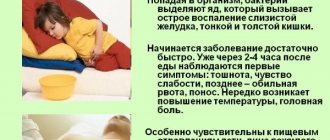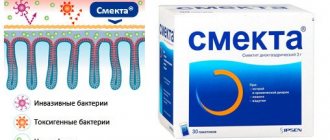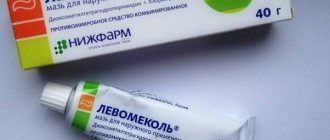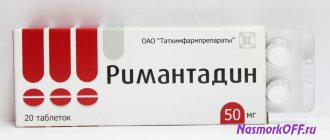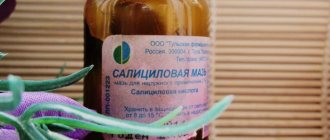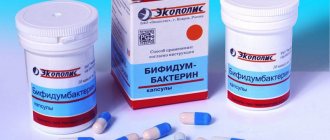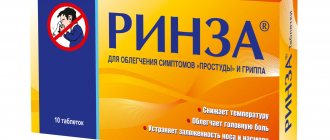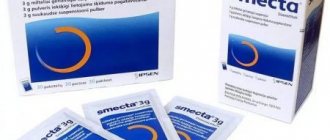With the birth of a new family member, parents are burdened not only with the joy of communicating with the baby, but also with a lot of concerns regarding his well-being and life. The health and physical development of the baby is a primary task, especially in the first year of life. During this period, most newborns suffer from various disorders of the gastrointestinal tract, including colic, diarrhea or constipation.
During the first month after birth, the baby's digestive system undergoes final formation, which becomes the reason for its poor health. To somehow help the baby survive this time, many grandmothers advise mothers to give him dill water. Such a folk remedy can cope with gas or bloating, but in case of vomiting or diarrhea it is absolutely ineffective.
Children under 1 year of age and mothers who are breastfeeding are often prescribed Smecta. It perfectly relieves symptoms of diarrhea, bloating, heartburn and helps with other intestinal dysfunctions. Taking Smecta by nursing mothers to normalize the baby's stool will not be able to solve a problem of this nature. This is explained by the fact that diosmectin, which is the main active ingredient, does not pass into breast milk, and therefore does not affect the baby’s body.
Description of the drug
Smecta is an enterosorbent that effectively eliminates the feeling of discomfort in the intestines and the causes of diarrhea. It is also ideal for infants, since dioactahedral smectin, which is part of the drug, is completely harmless to them. Diosmectin:
- has a local effect in the body;
- does not enter the general bloodstream;
- adsorbs exclusively harmful substances and gases, without absorbing useful elements that have nutritional value from the intestines;
- does not add color to bowel movements as it is radiolucent.
In addition, this drug reduces the negative impact on the intestinal mucosa from waste products of pathogenic microbes, thus protecting it. In most cases, indigestion is caused by failure to comply with basic rules of personal hygiene - for example, poorly washed hands, poorly processed bottles or mother's breasts can cause diarrhea and abdominal pain.
Smecta is a white powder that has a neutral odor and taste. Often parents are faced with a problem when the baby refuses to take bitter pills or medicines with an unpleasant odor. Powders are diluted in water and are easily drunk by children. In addition, there are various forms of release - for example, with vanilla or orange flavor. Despite the differences in taste, these drugs do not provoke allergic reactions.
Thanks to neosmectin, which is the main active component of Smecta, intestinal function returns to normal in a short time. It also has a high degree of viscosity and is insoluble in water.
For what purposes is Smecta usually used for newborns? In order to:
One of the important advantages of this medicine is associated with the structural features of diosmectin, which allows it to absorb not all substances, but in a selective manner. Thus, the drug leaves beneficial minerals and vitamins in the body without disturbing the microflora. Many therapists and pediatricians recommend it for problems with the gastrointestinal tract.
Despite the safety of use and widespread use of this drug, there are situations in which its use is contraindicated. Among them:
- Intestinal obstruction. In newborns it is the result of an abnormality of intrauterine development, and in older children it occurs as a manifestation of a serious disease.
- Glucose-galactose malabsorption. A disorder associated with impaired absorption of simple carbohydrates galactose and glucose in the intestines.
- Hypersensitivity. It is observed mainly in connection with additional components contained in the drug.
- Fructose intolerance. It is caused by a deficiency of specific enzymes. Passed on by inheritance.
- Sucrose-isomaltase deficiency. The absorption of disaccharides is impaired.
However, all of the above deviations are genetic in nature and are quite rare. Contraindications include chronic constipation, but the drug can be used for them only by monitoring the child’s reaction and being careful. If one of your close relatives has diabetes, only a pediatrician can prescribe Smecta.
- constipation;
- flatulence;
- hypersensitivity;
- itching;
- skin rashes;
- hives;
- Quincke's edema.
Instructions for use for infants
To avoid constipation, which may occur in a baby if the recommended dose of the drug is exceeded, parents need to know the dosage according to the child’s age. The table shows the regimens and doses of use for various symptoms in accordance with the age of the baby:
The appropriate amount of powder should be diluted in the required amount of warm boiled water and distributed into dosages throughout the day. It is important to stir the suspension well and not let it settle. For an infant, in addition to water, dilution in breast milk or formula is acceptable, and for older babies, mixing with semi-liquid porridge or vegetable purees is possible.
The drug should be taken between meals. If your baby does not want to drink the entire dose from the bottle at once, there is no need to force him. It is quite acceptable to eat from a spoon in small but frequent portions. After administration, it is necessary to carry the baby in an upright position to regurgitate and release excess air.
Use of Smecta during breastfeeding
This medicine is allowed to be used during breastfeeding, however, nursing mothers should not neglect the simple rules of use and follow the prescribed dosage:
- The usual course of treatment lasts 4 days. At the beginning, you should take 3 sachets per day for two days, with the calculation of 1 sachet per 100 ml of warm boiled water. Then for 2 days limit yourself to 1-2 sachets per day. If the need arises, it is permissible to increase the course to 5 days with a daily dosage regimen: 3p - 3p - 2p - 2p - 1p.
- Recommended time of use: one hour before meals or 1 hour after meals.
- When taking additional medications, you should maintain an interval of 2 hours between doses.
- The occurrence of side effects, such as constipation, vomiting, migraine or fever, requires reducing the dose or completely stopping the medication (we recommend reading: how to stop vomiting in a child at home?).
When breastfeeding, it is best to carry out treatment with Smecta under the supervision of a therapist. With the other option, it is important to closely monitor changes in the mother’s condition. If there is no improvement, partial or sometimes even complete elimination of the symptoms of diarrhea during three days of use of the drug, consultation with a doctor is necessary. He will conduct an examination, take the necessary tests and prescribe treatment for the nursing woman with other drugs.
What does it consist of?
To treat dysbiosis, relieve symptoms of diarrhea and poisoning, adults often take activated charcoal. “Smecta” works the same way, but its effect is more gentle. Therefore, pediatricians recommend this particular drug for newborns.
The main active ingredient is dioctahedral smectite. In addition, excipients included: cellulose monohydrate and sodium saccharinate. Natural flavoring is added to improve the taste. The drug is produced in powder form and packaged in individual sachets.
Cost and reviews
Parents of infants who used Smecta to combat diarrhea speak only positively about this drug. Regardless of how long the course of treatment was, there is a very rapid cessation of diarrhea, plus the problem does not return again after stopping the medication. Most mothers agree that it is absolutely safe to give it to children at any age. This neutral-tasting powder does not irritate the baby’s intestinal mucosa and is excreted from the body in its original form.
In addition to its ability to effectively cope with various forms of diarrhea, this remedy also boasts accessibility due to its fairly low cost compared to the prices of other medications. Usually 10 sachets of powder can be bought for around 200 rubles. Smecta also has a fairly long shelf life - 3 years, and therefore it is quite reasonable to purchase it for future use. The approximate course of treatment, which doctors advise to drink, lasts from three to seven days, that is, one package will definitely be used.
On various forums, parents leave in most cases good reviews about this product. An exception is when taking Smecta caused constipation or an allergic reaction to the drug in a newborn. Often this is a consequence of self-medication, which adults resort to without the appointment of a specialist. The drug is quite inexpensive, plus it has detailed instructions for use and is sold in pharmacies without a prescription, which leads to widespread use and the appearance of side effects from unreasonable use.
Side effects
This medicine is the most optimal remedy for children, because side effects such as constipation can occur in extremely rare cases. If constipation still occurs, it is recommended to simply reduce the dosage slightly. It is not recommended to give smecta to children who are hypersensitive to the components of the drug or have intestinal obstruction.
In any case, consult your pediatrician before using the drug.
Dear readers! Read the instructions carefully and take medications for the treatment of newborns with caution. The best treatment is prevention. Health to you and your kids.
We bring to your attention programs of developmental classes with therapy dogs, depending on the age of the child and your wishes:
Similar drugs
There are several Russian-made analogues of Smecta - the drugs Diosmectin and Neosmectin. Their composition does not differ from the composition of the previously described medicine; they have the same effect on the body. Among their assortment you can choose powders with raspberry, lemon, orange and vanilla flavors. Manufacturers also provide a choice of packages that can contain from 1 to 30 sachets for any occasion. In addition, the price of Russian drugs is lower. While Smecta costs about 140-180 rubles, Diosmectin or Neosmectin can be purchased for 90-140 rubles.
In cases where neither Smecta nor similar drugs are suitable, you can turn to drugs that have a similar effect, but have a different composition:
- Enterosgel, which is allowed to be given even to the smallest and is often prescribed for jaundice and dysbiosis. However, the unpleasant taste makes it difficult to use, since children do not really like to drink it. According to the instructions, a single dose is 2.5 grams, which the mother needs to measure using a teaspoon. You can buy 255 grams of the drug in the range from 360 to 490 rubles.
- Enterodesis is also considered safe for babies from the first days of life. It is a strong adsorbent, which contains only one active substance - polyvinyl lyrrolidone powder. The drug has a neutral taste, which makes it easier for children to use. For one serving of powder for infants, you need to dilute 2.5 grams in 50 ml of boiled water. To avoid gag reflexes, it is better to give it gradually in small portions.
You should not take Smecta and its analogues constantly or if there is no reason for this. Preparations based on simethicone - for example, Espumisan drops for newborns, Bobotik drops or Sub Simplex - can easily cope with colic and flatulence. With their help, gas formation is slowed down and gas accumulation in the child is prevented, which prevents painful spasms (we recommend reading: how to treat colic and gas in newborns?).
All iLive content is reviewed by medical experts to ensure it is as accurate and factual as possible.
Methods of administration
The instructions for the drug clearly indicate how to give Smecta to infants. When treating with other drugs, it is important to separate their administration. The absorbent is offered two hours before taking the main medications, or two hours after. Otherwise, the effect of the drug will significantly reduce the effect of the medicinal pills.
In order not to provoke other disorders and constipation in the baby, the recommended dose cannot be exceeded. “Smecta” can be poured into a bottle, but if the baby refuses to drink a drink that tastes unusual, then you will have to use a syringe without a needle. Older children can be fed with a spoon. The drink is almost tasteless, so children usually do not refuse to drink it.
Parents in their reviews often give advice on proper dilution of the powder. To prevent lumps from forming, the product should be poured into warm water in a thin stream, stirring constantly.
Doctors advise that when treating with absorbents, often offer the baby warm water or breast milk.
Indications for use of smecta for a newborn
To understand the main indications for the use of this drug, you need to understand what the active ingredient is and whether Smecta can be used for newborns. The main active ingredient is diosmectite. This is a natural substance whose function is to sorption, that is, absorb, all harmful substances and some microorganisms. The drug is natural, it is not enriched with any dyes or preservatives. Another property of the drug is that it is excreted from the intestines unchanged, without being absorbed or reacting with other substances. Therefore, the use of the drug is practically harmless. According to the instructions, the drug is allowed from one month, but taking into account the peculiarities of the drug’s elimination, doctors also use it in the neonatal period. Therefore, we can say that Smecta can be taken by newborns. There is a release form with additives - vanilla, orange, strawberry - it is better not to use such forms in newborns, due to the risk of an allergic reaction. Therefore, pure Smecta without additives can be used in the treatment of newborns.
Considering that the main function of the drug is the absorption of harmful substances in the intestines, it should be used only in certain cases. The drug is most widely used for acute and chronic diarrhea in newborns. Diarrhea in a newborn can be of infectious origin, when a pathogenic virus or bacteria multiplies in the intestines, affecting the mucous membrane and stimulating the release of water from the cells. This is not only accompanied by diarrhea in the child, but also a disruption of the normal digestion process. This creates a lot of undigested particles, which aggravate intestinal problems. In this case, the use of Smecta leads to the absorption of bacteria, viruses, destroyed cells, as well as other food components. The drug envelops the mucous membrane of the stomach and intestines and reduces the secretory activity of cells, that is, diarrhea decreases. Therefore, Smecta for newborns with diarrhea is considered one of the main means of treatment, together with rehydration therapy.
Smecta for jaundice in newborns is considered one of the new approaches to the treatment of this pathology. With jaundice in newborns, indirect bilirubin accumulates, which enters the skin and internal organs, thereby causing a yellow color. All this is associated with low liver function in children immediately after birth. The liver cannot cope with the load, as the child’s fetal hemoglobin begins to break down. This leads to a rapid increase in bilirubin, which must be converted into direct bilirubin in the liver and excreted through the intestines. But not all children can cope with such a load. Therefore, excess bilirubin remains in the intestines. It is believed that Smecta can absorb this excess bilirubin, thereby reducing the severity of jaundice. In this case, bilirubin is excreted from the intestine, absorbed on the drug. Therefore, the use of this remedy for jaundice, especially pathological, is considered effective.
Smecta orange and vanilla for newborns can only be used if you are sure there is no allergic reaction.
Indications for use of the drug, which are indicated in the instructions, are the treatment of acute and chronic diarrheal syndromes. But the drug can also be used for the purpose of sorption of any harmful substances, can be used in the treatment of jaundice, and also in some cases when a child has severe loose stools against the background of certain foods.
Adults know: at the first sign of indigestion with any symptoms, the best solution is to take Smecta as soon as possible. It instantly relieves pain and discomfort, preventing the serious consequences of poisoning and other stomach problems.
Therefore, many mothers have a reasonable question - whether to give Smecta to a newborn when he has colic, nausea, vomiting or diarrhea.
Features of the digestive system in children
In order not to make a mistake with the diagnosis and not to start panicking for no reason, you need to understand how the intestines of a newborn should work normally. Pay attention to the following features of the functioning of the gastrointestinal tract of infants.
The first few days after birth
Newborns pass dark-colored stool. It looks like fuel oil, is not formed, and has no odor. These are epithelial cells from the intestinal walls and the remains of the digestion products of nutrients from the mother. This stool is called meconium. After its release, the intestines are absolutely clean and ready to digest breast milk.
After two to three days, the stool changes consistency and color. The baby poops loosely three to four times a day. Children on IV have darker and thicker stools. You don't have to worry about color and consistency for now. Pieces of undigested milk, mucus and foam during this period are also considered normal.
1–2 months after birth
Children on IV have a bowel movement at least once a day. Breastfed babies more often: from two times to six to eight (after each feeding).
3–6 months after birth
The baby poops less often. By 6 months, once or twice a day, in rare cases once every one or two days. This occurs due to adaptation to nutrition, adjustment of the gastrointestinal tract to foods, and normalization of the production of enzymes for digestion. If a child rarely walks, but feels well and is gaining weight, there is no need to panic.
After six months
The introduction of complementary foods changes the frequency of stool and its appearance. The feces become formed, dark, with a characteristic odor. The baby should go to the toilet once or twice a day.
Important! Determine constipation not by the number of soiled diapers, but by the general condition of the baby and the type of feces. A good mood during bowel movements and normal weight gain are incompatible with constipation.
Smecta for newborns: to give or not?
To understand whether Smecta can be given to newborns, you need to know how it works and what this popular drug consists of. He appeared like this.
French scientists obtained from the island of Sardinia a white clay called diosmectite, which is mined at the site of a volcanic deposit. They purified it using a three-phase method and obtained a unique substance that is not absorbed by the body, but absorbs other elements.
Absorbs means absorbs. And Smecta is capable of absorbing many things that the body does not need – toxins and pathogenic bacteria. Having absorbed them, it simply leaves the gastrointestinal tract naturally, thereby relieving the body of various conditions - from vomiting to diarrhea.
When to give Smecta to a newborn
This natural drug has a wide range of uses for ailments associated with the gastrointestinal tract. Great for:
- Smecta for colic in newborns, flatulence, bloating.
- Smecta for newborns with diarrhea.
- Smecta for newborns with allergies.
- Smecta for newborns for constipation.
- Smecta for newborns with jaundice.
- Smecta for newborns with frequent regurgitation.
- Smecta for newborns with dysbacteriosis.
And all this is one drug, sold in every pharmacy. You can use classic powder sachets.
And if your baby takes medicine from a spoon, then you can try a new product - Smecta in a ready-made form that does not require dilution with liquid.
How it works:
- gently envelops the inner surface of the stomach and intestines, protecting against the harmful effects of toxins or bacteria;
- relaxes muscles, relieving cramps, pain and discomfort in the tummy;
- stops diarrhea and vomiting or eliminates constipation;
- works as a warning against dysbacteriosis;
- completely passes through the stool unchanged, removing with it everything harmful.
What can be replaced
Sometimes taking Smecta is contraindicated for a child. In this case, it is necessary to use any analogue, for example: Neosmectin, Smectite, Diosmectite.
Analogs of Smecta also include Enterosgel and activated carbon. However, not all of these drugs are suitable for use in infants.
Self-medication is absolutely unacceptable; it is imperative to consult with your treating pediatrician.
In most cases, on various Internet forums and blogs you can only find positive comments about the use of the drug. Smecta occupies a leading position when used in infants, as it is absolutely non-toxic.
The opinions of doctors also remain positive and they recommend this drug in the fight against disorders of the gastrointestinal tract in both children and adults.
When using this product, the work of the newborn’s gastrointestinal tract quickly improves, diarrhea and vomiting stop.
One of the positive aspects of using the drug is its relatively low price.
It will be interesting:
We wrote about foamy stools in a baby here - read more
Problems of the gastrointestinal tract of newborn children most often worry in the period from 2 weeks to 1.5 months of life, since the formation of the digestive system occurs during this period of time. Its disorder causes constipation and colic, diarrhea and flatulence. If infants have to be treated with medications, the intestines also suffer. Pediatricians advise mothers to give their babies dill water and fennel teas. But they only fight bloating and do not eliminate diarrhea and vomiting. Smecta, an antidiarrheal powder with an adsorbing effect, the active substance of which is dioctahedral smectite, will help parents cope with these problems.
Instructions for use
If you need Smecta for newborns, the method of application and form of the drug will be the same as for adults, because there are no packages with a child dosage. That is, you can safely take a bag from the family medicine cabinet and give it to your baby.
There are several nuances of preparation and use, taking into account the fact that the patient is very small. These are the rules on which the use of Smecta for newborns is based.
- Before giving this medicine to your baby, you need to ask your doctor about this, because sometimes it can worsen the condition (with prolonged severe constipation or intestinal obstruction, for example).
- You need to take one sachet and dilute the entire powder with 100 milliliters of liquid (if this is not a ready-made version of the drug, you can simply give it right away).
- Smecta dosage for newborns is 1 diluted sachet per day, but in 4 or 5 doses, that is, 25 or 20 ml at a time.
- For severe colic, diarrhea, and vomiting, the maximum number of sachets per day is two.
- If, as prescribed by the doctor, your baby is taking other medications, the interval between them and diosmectite should be at least two hours, since the latter will remove the former from the body and will not allow them to act.
- Smecta is prescribed daily, from three to seven days.
- During treatment, the baby should drink more drinking water than usual to facilitate the elimination of unnecessary substances.
Contraindications
Contraindications to the use of the drug include fructose intolerance in the child. The drug is also prohibited for use in children with intestinal obstruction, severe constipation, or allergies to any of its components.
If there is no improvement in the child’s condition within 3 days, you should consult a doctor.
With prolonged use of the drug, constipation may occur, since Smecta is the strongest natural adsorbent.
Smecta for newborns: how to give
Having decided to use this safe and very effective medicine, many do not know how to give Smecta to a newborn child. First, you can pour the prepared suspension into his usual bottle and give it like any other liquid.
If the new taste makes the baby refuse it, you will have to administer the medicine using a syringe without a needle. You just need to open your mouth slightly and pour the liquid onto the inner surface of the cheek - this way the baby will not choke, and the medicine will get where it should. If the child already eats from a spoon, then you can try to give a suspension in this way.
Smecta should always be in the first aid kit
As you can see, Smecta for a newborn is a real salvation, because it is with digestion that he has the most problems in the first year of life. These include various infections, and almost everyone has obligatory colic, constipation, and switching to new foods. In all these cases, this indispensable drug will help to very quickly relieve the child’s pain, eliminate the symptoms that frighten him and improve the functioning of the gastrointestinal tract.
If for some reason you cannot purchase or use Smecta, similar preparations based on a natural absorbent are also suitable for newborns. You can ask the pharmacy for Diosmectite, Smectite or Neosmectin, which have all the properties of the drug we reviewed, since they contain purified white clay.
